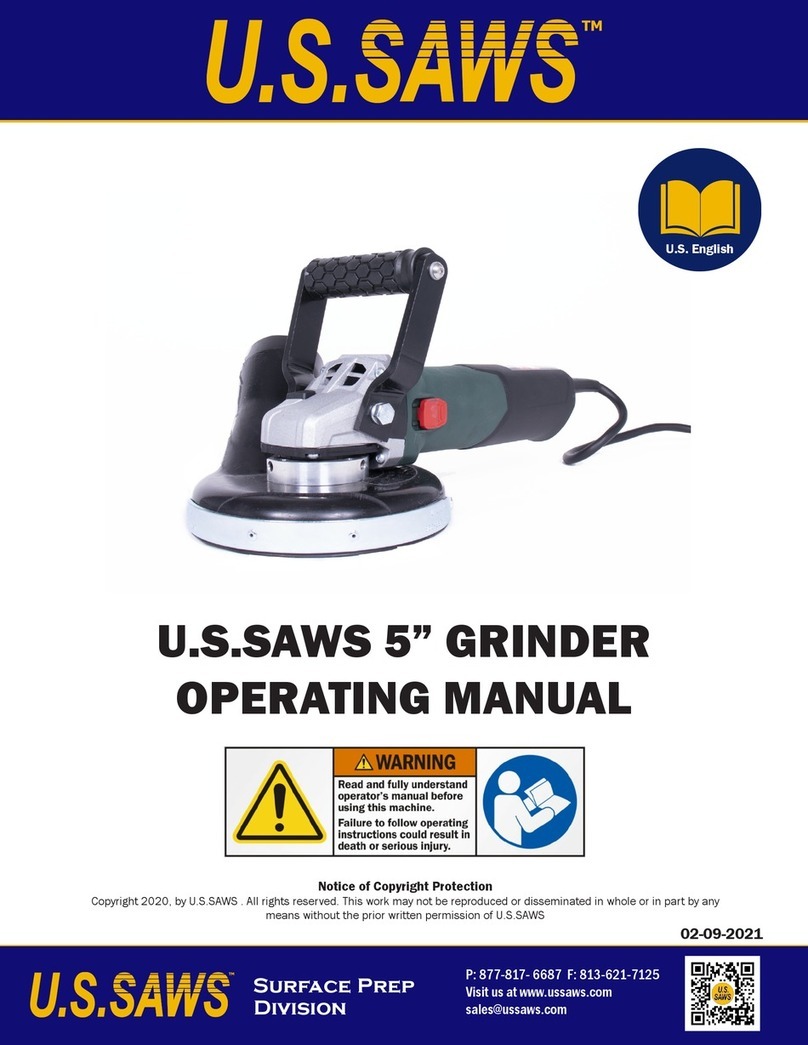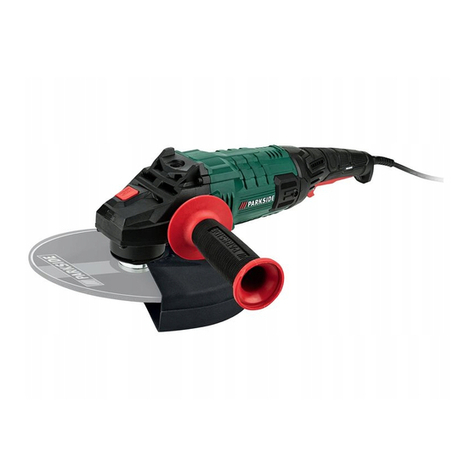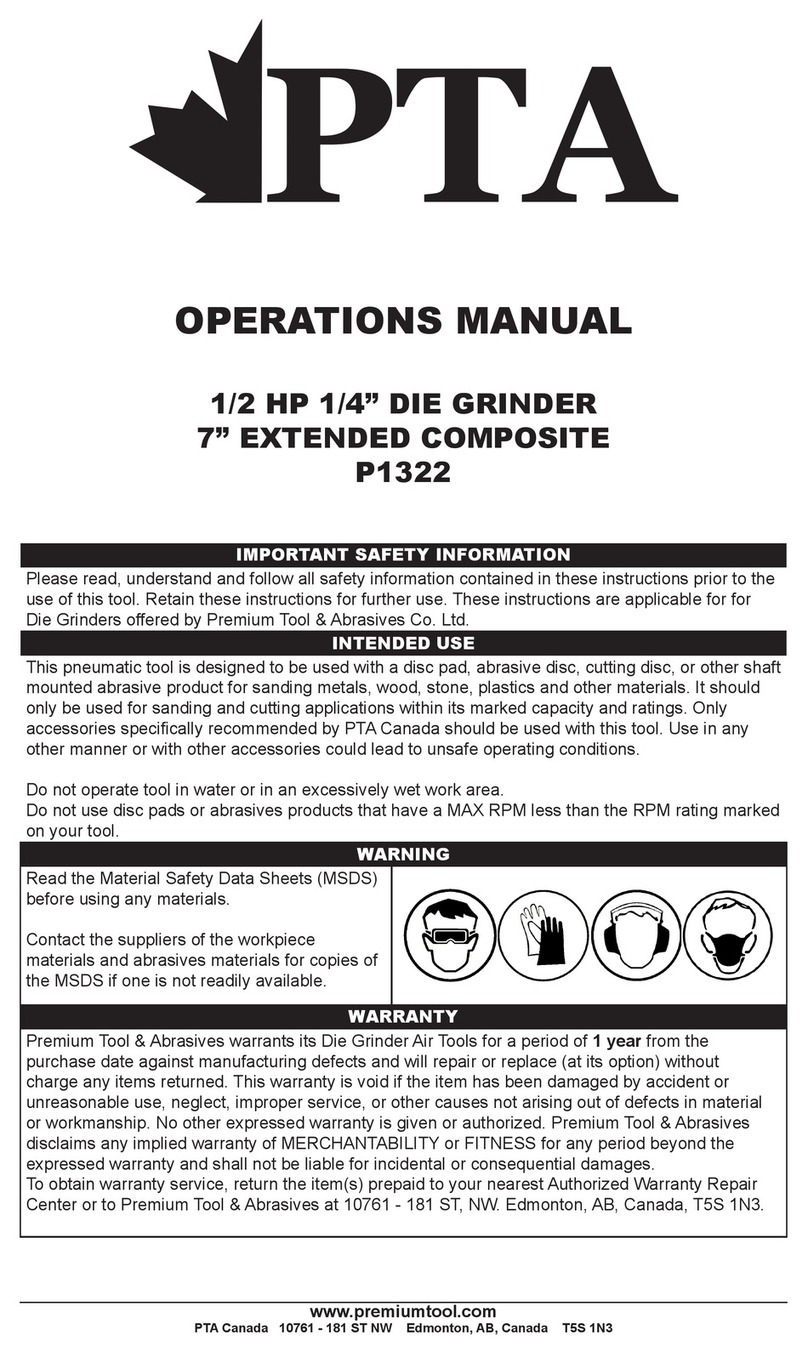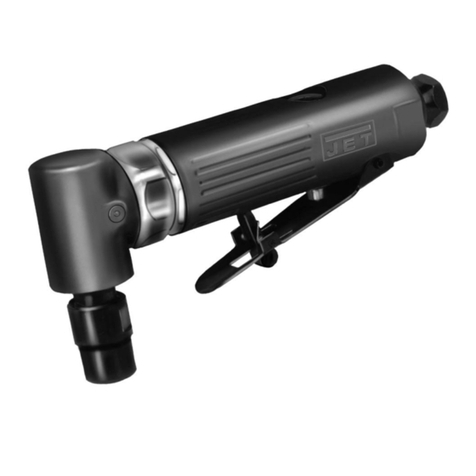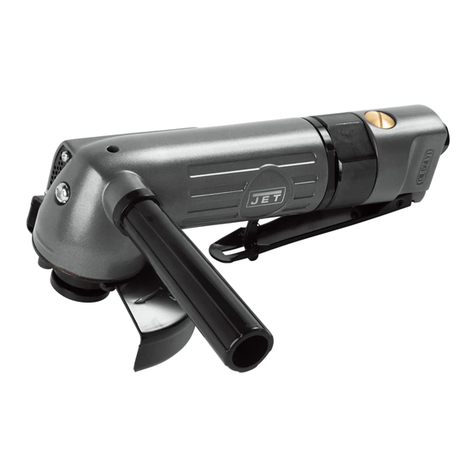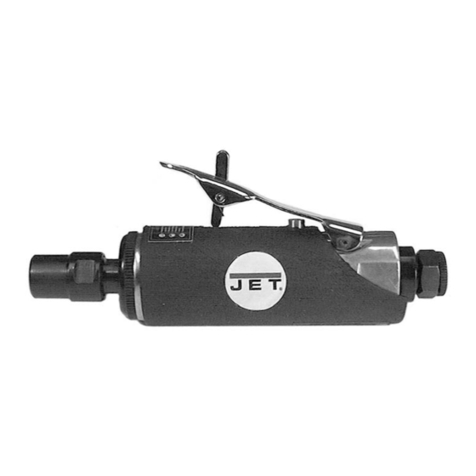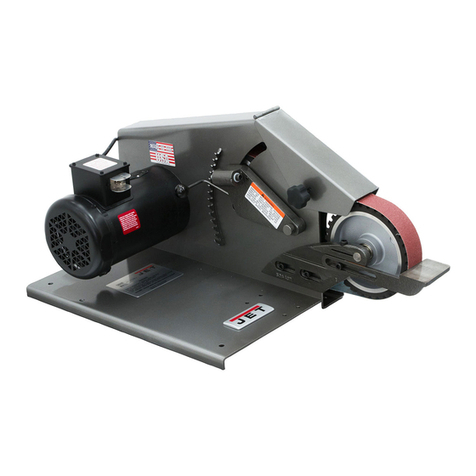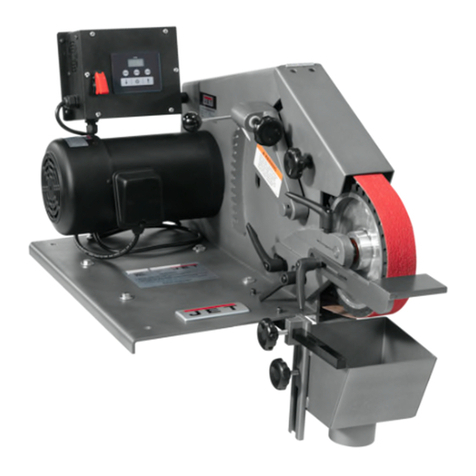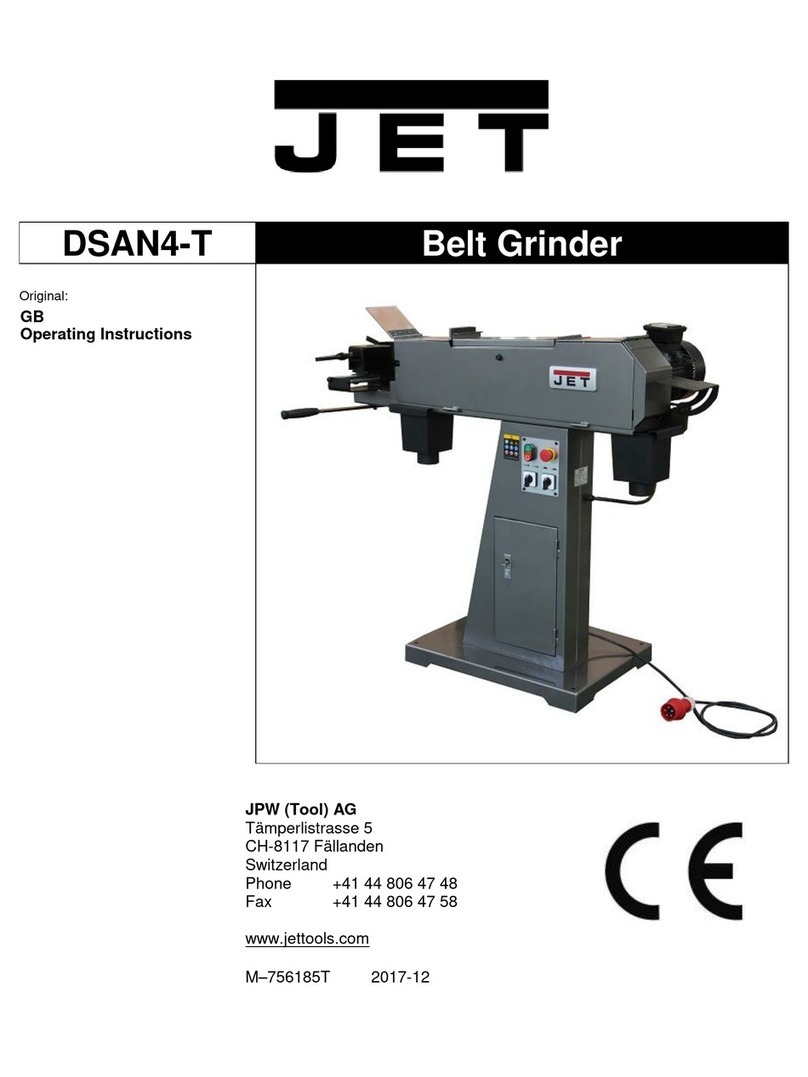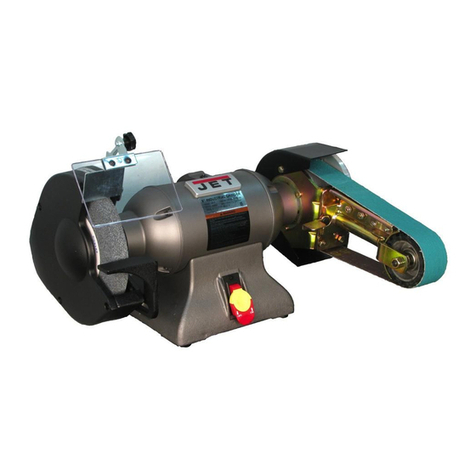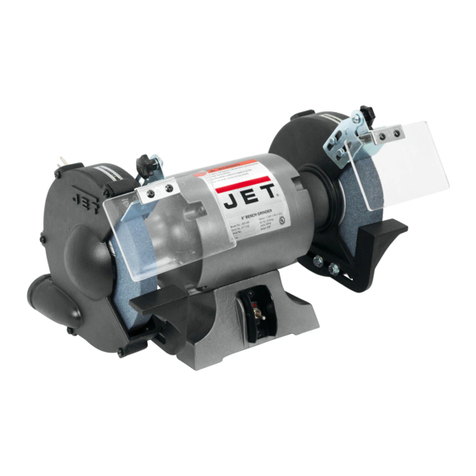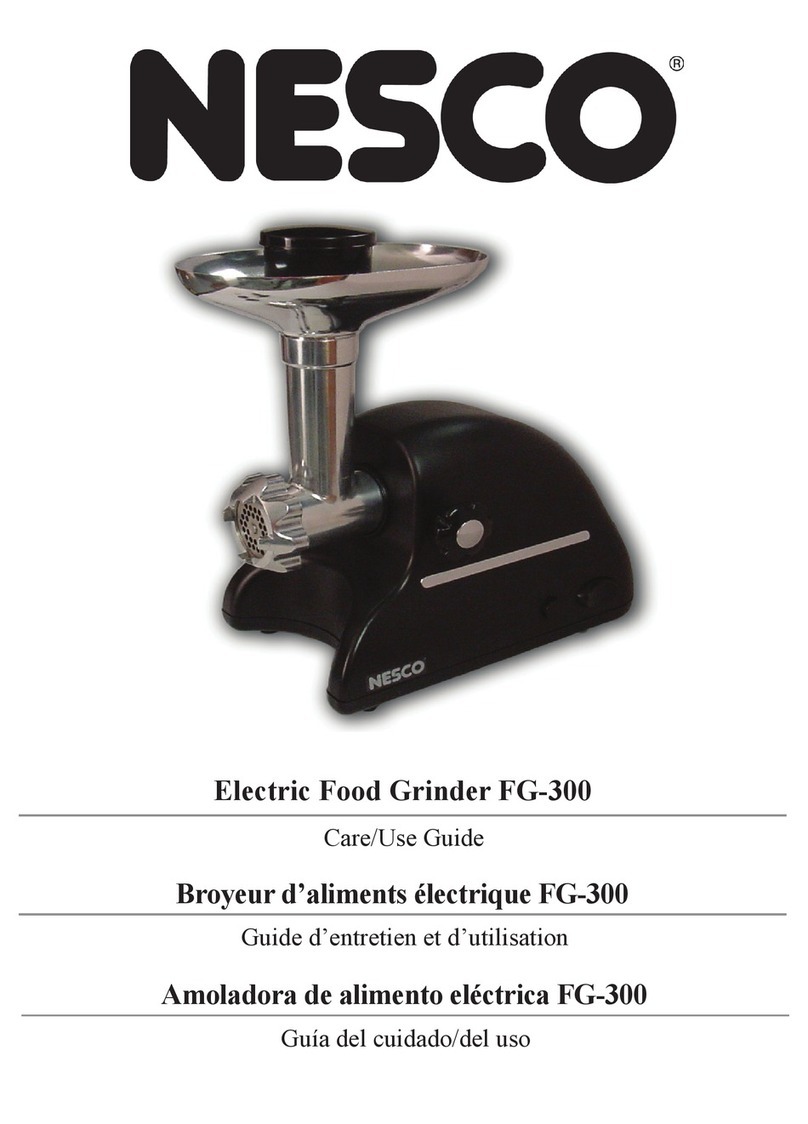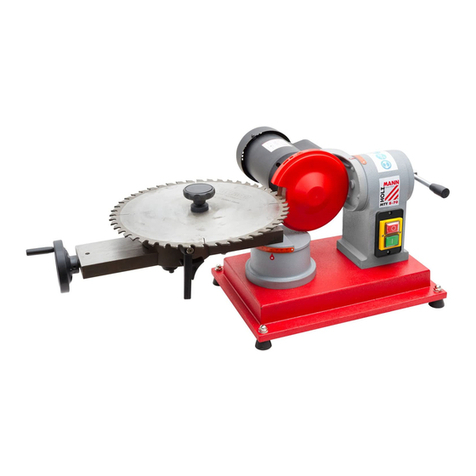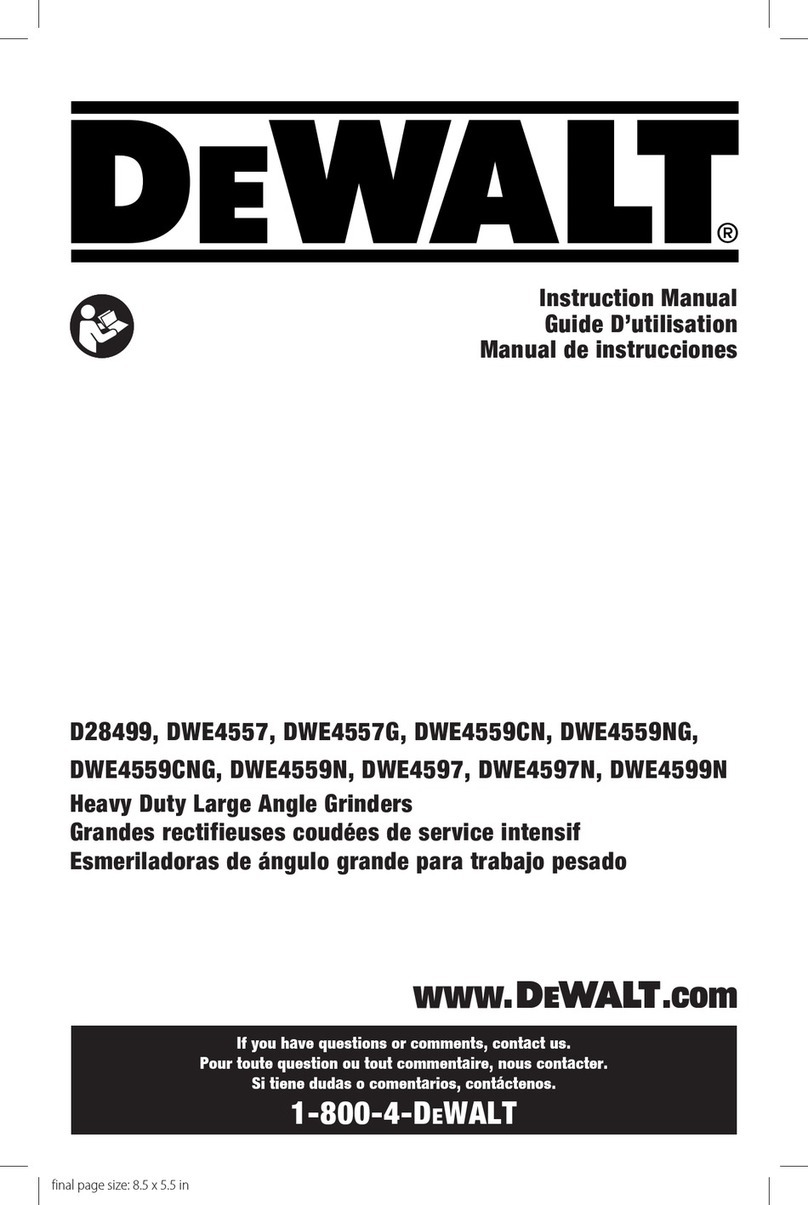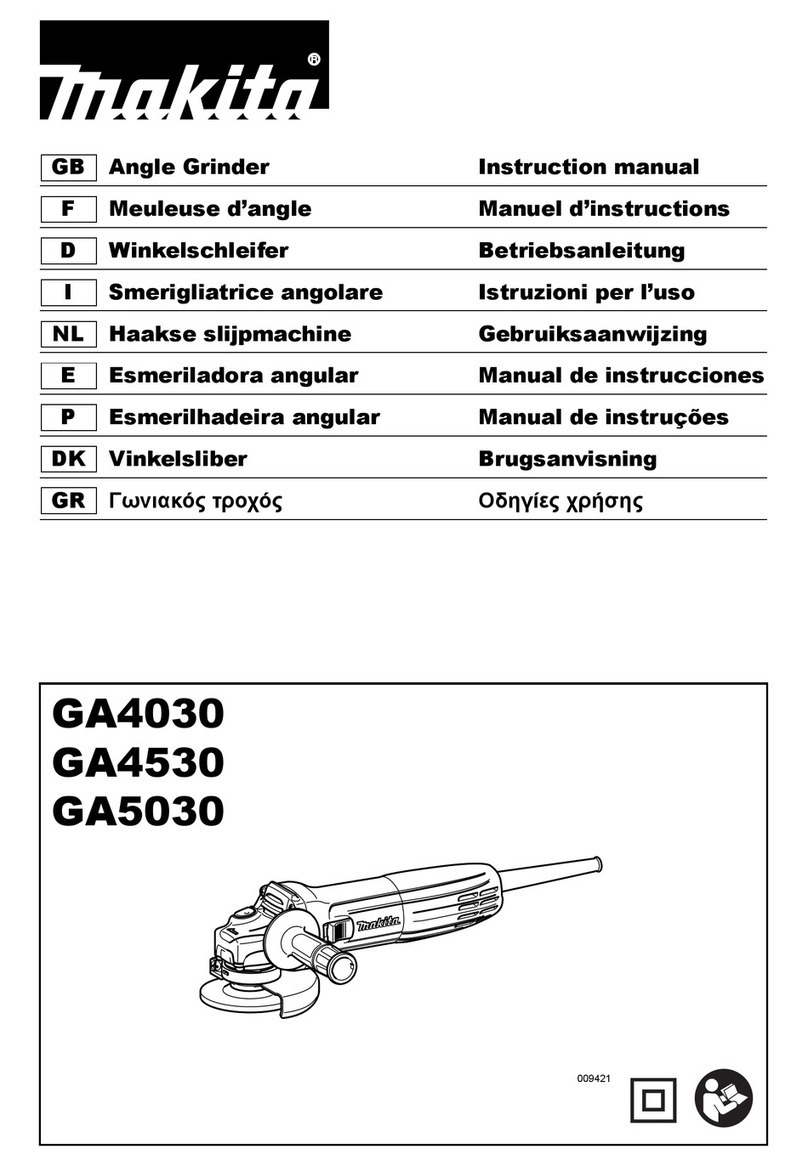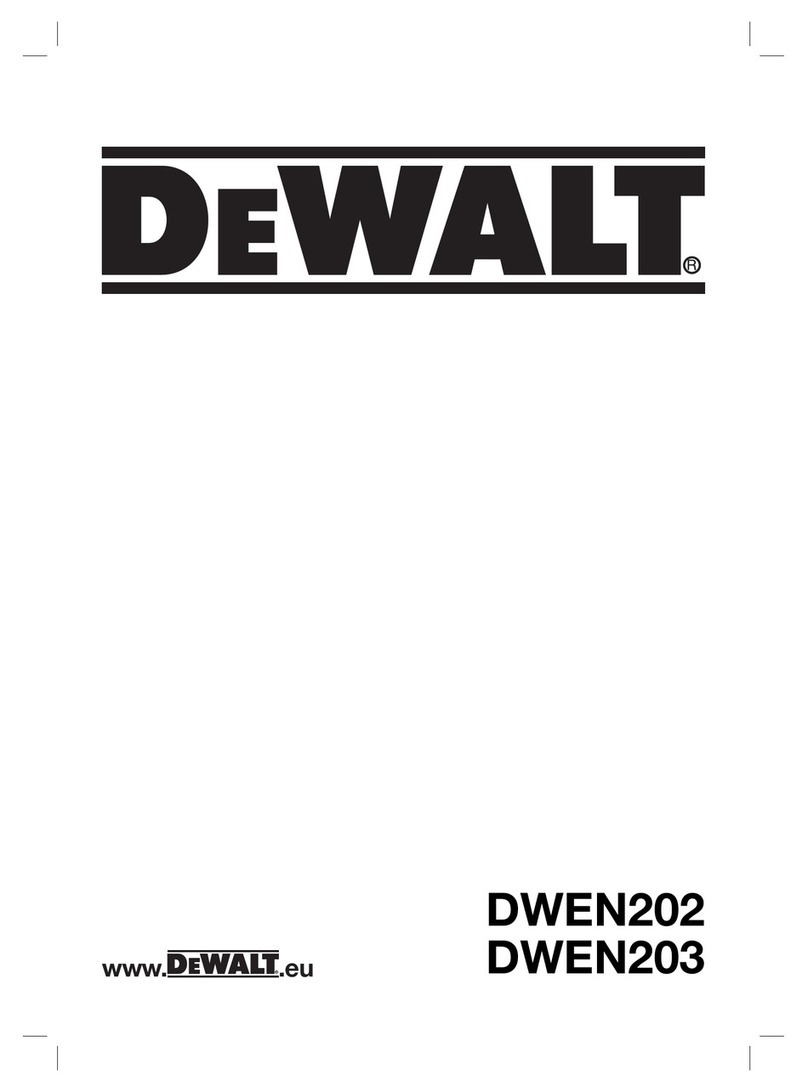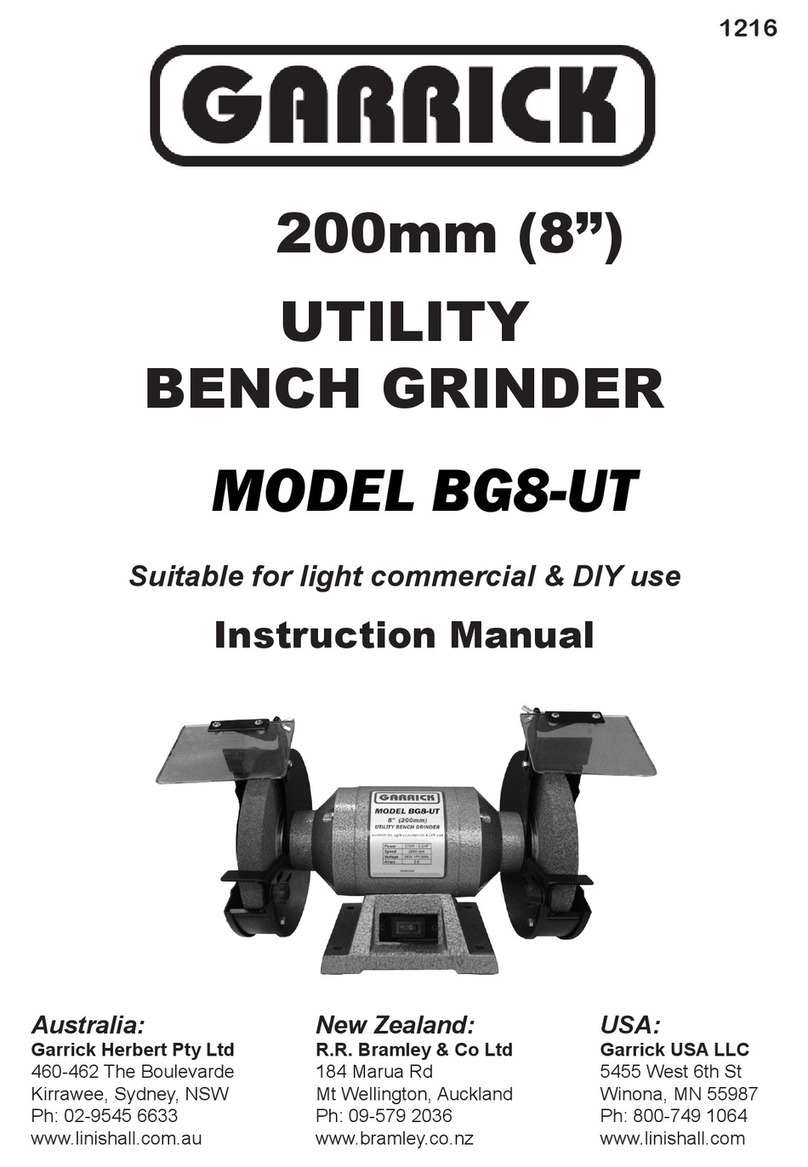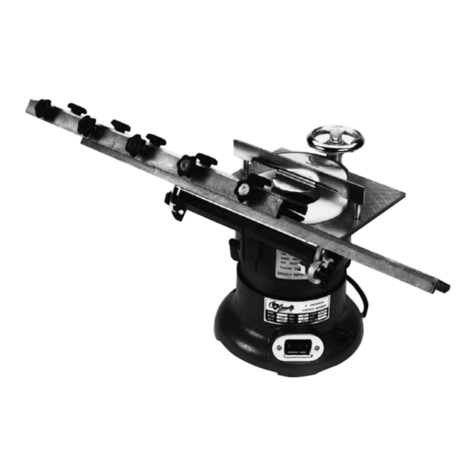19. CHECK DAMAGED PARTS. Before further use of the tool, a guard or other part
that is damaged should be carefully checked to determine that it will operate
properly and perform its intended function - check for alignment of moving parts,
binding of moving parts, breakage of parts, mounting and any other conditions
that may affect its operation. A guard or other part that is damaged should be
properly repaired or replaced.
20. DIRECTION OF FEED. Feed work into wheels against the direction of rotation of
the wheel only.
21. NEVER LEAVE TOOL RUNNING UNATTENDED. TURN POWER OFF. Don’t
leave tool until it comes to a complete stop.
GROUNDING
1. In the event of a malfunction or breakdown, grounding provides a path of least
resistance for electric current to reduce the risk of electric shock. This tool is
equipped with an electric cord having an equipment-grounding conductor and a
grounding lug. The plug must be plugged into a matching outlet that is properly
installed and grounded in accordance with all local codes and ordinances.
2. Do not modify the plug provided. If it will not t the outlet, have the proper outlet
installed by a qualied electrician.
3. Improper connection of the equipment-grounding conductor can result in a risk of
electric shock. The conductor with insulation having an outer surface that is green
with or without yellow strip is the equipment-grounding conductor. If repair or
replacement of the electric cord or plug is necessary, do not connect the equip-
ment-grounding conductor to a live terminal.
4. Check with a qualied electrician or serviceman if the grounding instructions are
not completely understood, or if in doubt as to whether the tool is properly
grounded.
5. Use only 3-wire extension cords that have 3-prong grounding plugs and 3-pole
receptacle that accept the tool’s plug.
6. Repair or replace damaged or worn cord immediately.
7. This tool is intended for use on a circuit that has an outlet that looks like the one
illustrated in Sketch A in Figure 1. The tool has a grounding plug that looks like the
lug illustrated in Sketch A in Figure 1. A temporary adapter, which looks like the
adapter illustrated in Sketches B and C, may be used to connect this plug to a 2-
pole receptacle as shown in Sketch B if a properly grounded outlet is not available.
The temporary adapter should be used only until a properly grounded outlet can
be installed by a qualifed electrician. The green-colored rigid ear, lug, etc. extend-

